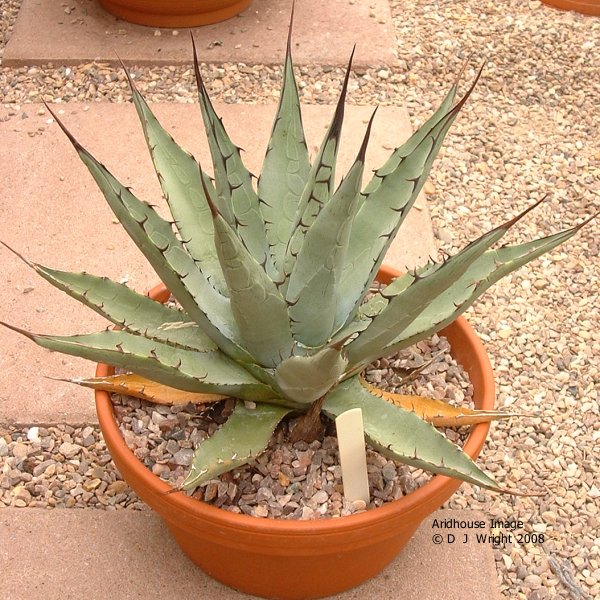
Description.
Small to medium, light glaucous gray to light green, freely suckering, few to many leaved, rather flat-topped rosettes; Plants, freely suckering and seeding, rosettes rather open with 30 to 40 leaves at maturity, up to 1m tall.
Leaves 20 to 45cm long, 5 to 12 cm wide, lanceolate, usually broadest near middle, mostly rather short-acuminate, rigid, thickly rounded below, concave above; teeth above the mid-blade mostly 5 to 7 mm long, 1 to 3 cm apart, nearly straight or flexed, slender, dark brown to grayish. Spine 2.5 to 4 cm long, subulate to acicular, flat above in a broad shallow groove.
Parryanae are mesophytes rather than xerophytes and do not inhabit the dry desert habitats. While some occur in the Chihuahuan Desert, as A. Parrasana, they are restricted to the larger mountains, where more moisture occurs than over the lower surrounding desert plains.
Eastern bajada of the Sierra Guadalupe.
Agave neomcxicana suckers abundantly, much like A. parryi, but
the rosettes and clones are generally smaller , the leaves more slender, and the inflorescence smaller with fewer
branches. A. neomexicana and A. gracilipes do grow sympatrically in the Guadalupe Mountains and perhaps
elsewhere. Without inflorescence characters most leaf specimens of these two species are not distinguishable.


